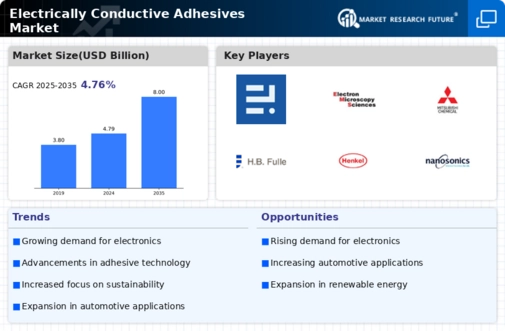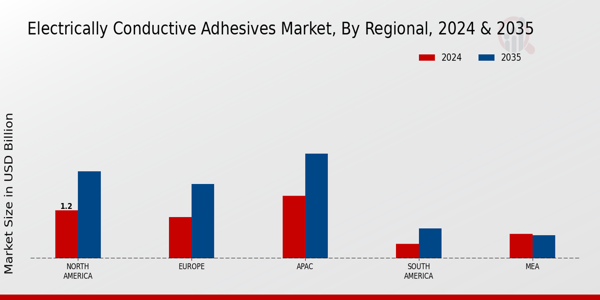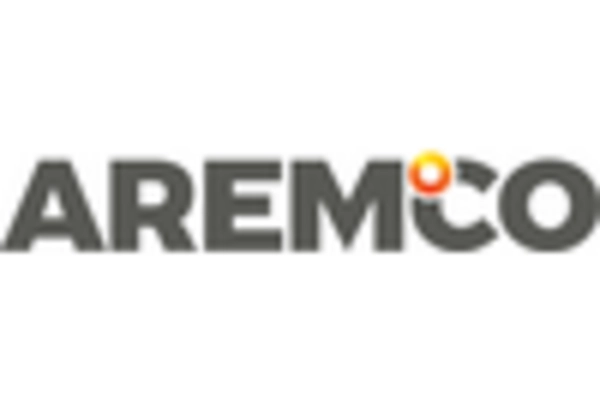Rising Demand in Electronics
The Electrically Conductive Adhesives Market is experiencing a surge in demand driven by the rapid growth of the electronics sector. As electronic devices become more compact and sophisticated, the need for reliable bonding solutions that provide electrical conductivity is paramount. The market for electrically conductive adhesives is projected to reach USD 3.5 billion by 2026, reflecting a compound annual growth rate of approximately 8.5%. This growth is largely attributed to the increasing use of these adhesives in applications such as circuit board assembly, LED manufacturing, and semiconductor packaging. The ability of electrically conductive adhesives to replace traditional soldering methods is also contributing to their rising popularity, as they offer advantages such as lower thermal stress and improved flexibility.
Advancements in Material Science
Innovations in material science are significantly influencing the Electrically Conductive Adhesives Market. The development of new formulations and composites is enhancing the performance characteristics of these adhesives, making them more effective in various applications. For instance, the introduction of silver-filled adhesives has improved conductivity and thermal stability, which is crucial for high-performance electronic applications. Furthermore, the integration of nanotechnology in adhesive formulations is expected to drive market growth, as it allows for the creation of adhesives with superior properties. The market is anticipated to expand as manufacturers increasingly adopt these advanced materials to meet the evolving demands of the electronics industry.
Growth in Renewable Energy Sector
The Electrically Conductive Adhesives Market is poised to benefit from the expansion of the renewable energy sector. As the world shifts towards sustainable energy solutions, the demand for efficient and reliable bonding materials in solar panels and wind turbines is increasing. Electrically conductive adhesives are essential for ensuring the durability and performance of these energy systems. The market for these adhesives in renewable energy applications is expected to grow at a rate of 9% annually, driven by the increasing installation of solar photovoltaic systems and the need for efficient energy conversion. This trend highlights the potential for electrically conductive adhesives to play a critical role in the transition to renewable energy.
Automotive Industry Transformation
The Electrically Conductive Adhesives Market is significantly impacted by the transformation occurring within the automotive sector. With the rise of electric vehicles (EVs) and advanced driver-assistance systems (ADAS), there is a growing need for reliable bonding solutions that can withstand the unique challenges posed by these technologies. Electrically conductive adhesives are increasingly utilized in the assembly of EV batteries, sensors, and electronic control units, providing essential electrical connections. The automotive sector is projected to account for a substantial share of the electrically conductive adhesives market, with an expected growth rate of 7% over the next five years. This trend underscores the importance of these adhesives in supporting the automotive industry's shift towards electrification.
Increased Focus on Miniaturization
The trend towards miniaturization in various industries is driving the Electrically Conductive Adhesives Market. As devices become smaller and more complex, the need for adhesives that can provide strong electrical connections in limited spaces is becoming increasingly critical. This trend is particularly evident in consumer electronics, where manufacturers are striving to create thinner and lighter products without compromising performance. The market for electrically conductive adhesives is expected to grow as companies seek solutions that facilitate miniaturization while maintaining reliability. This focus on compact design is likely to propel the demand for innovative adhesive solutions that can meet the stringent requirements of modern electronic applications.


















Leave a Comment